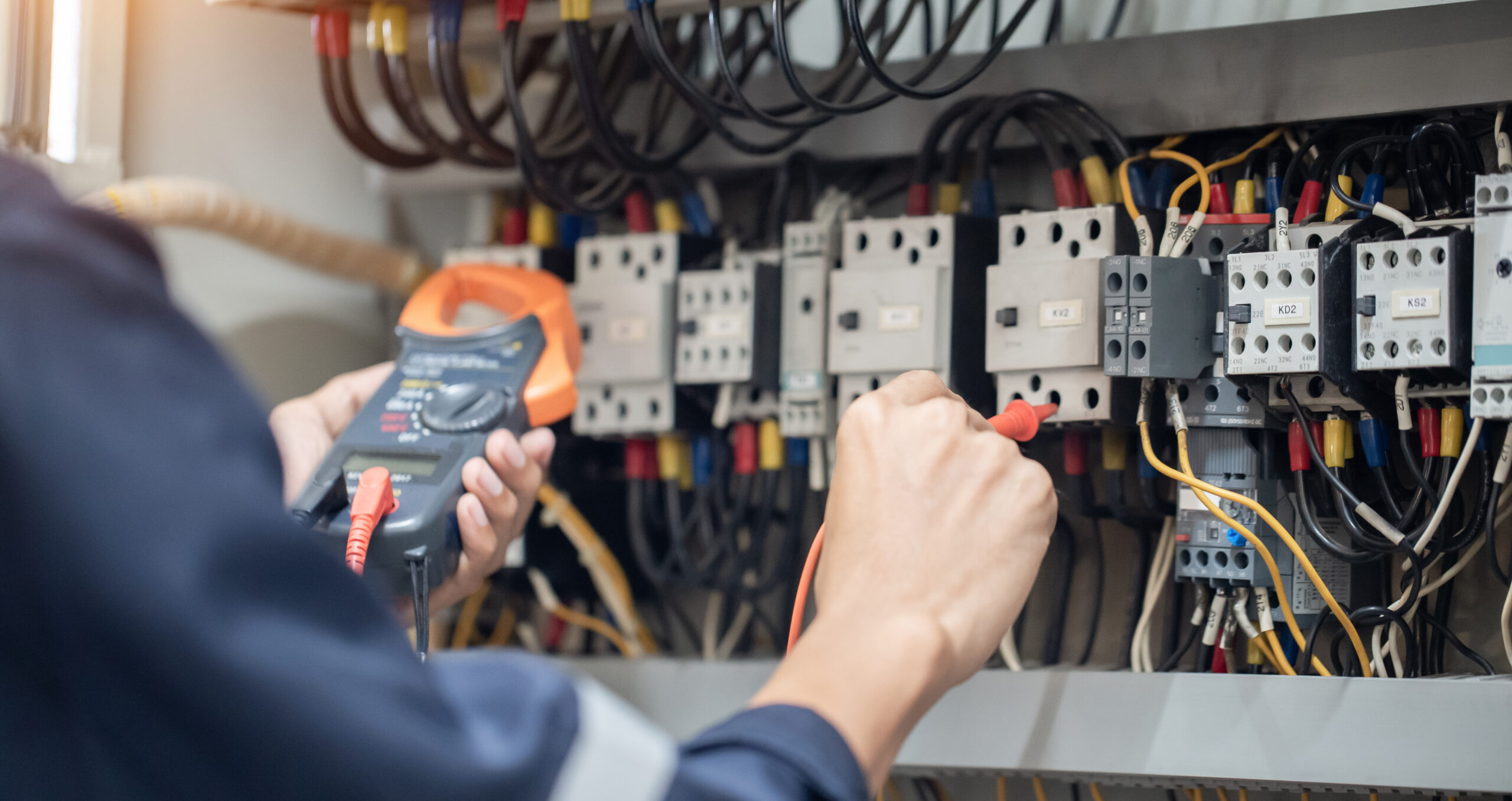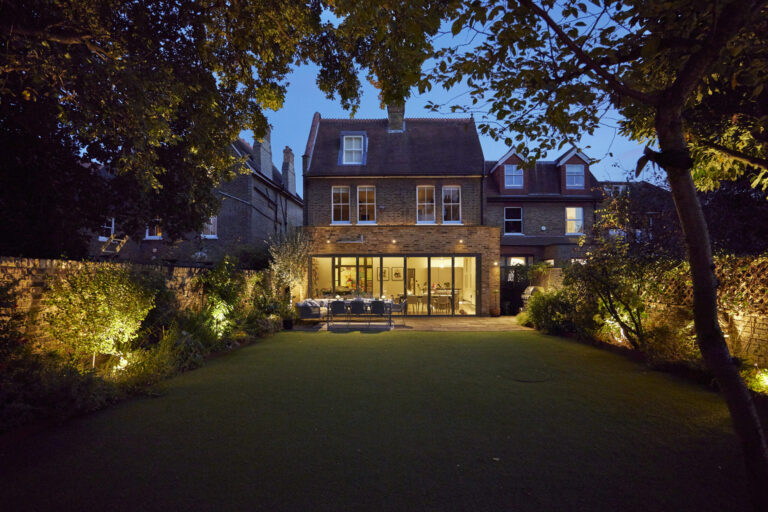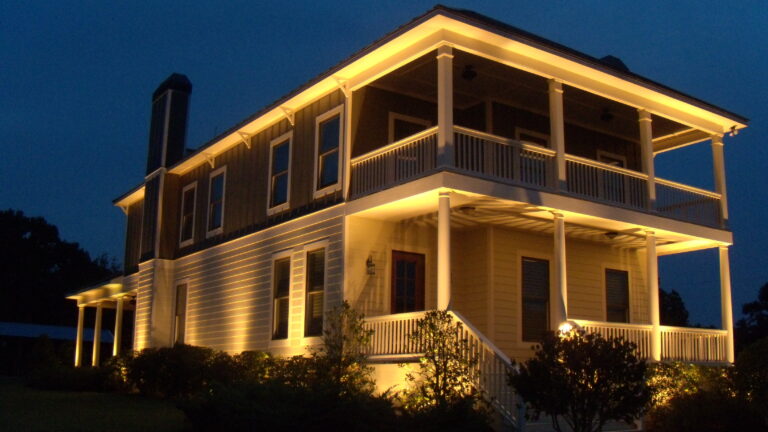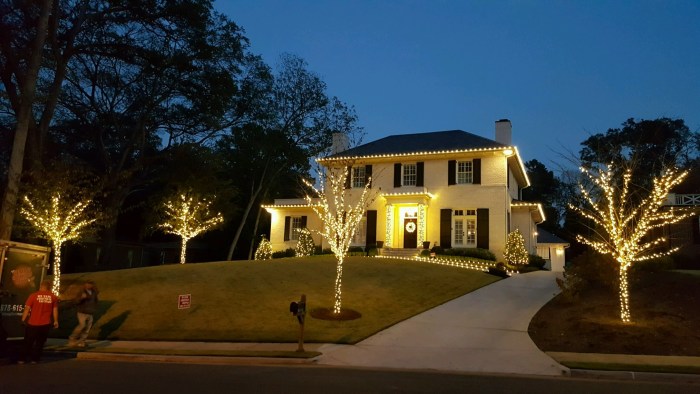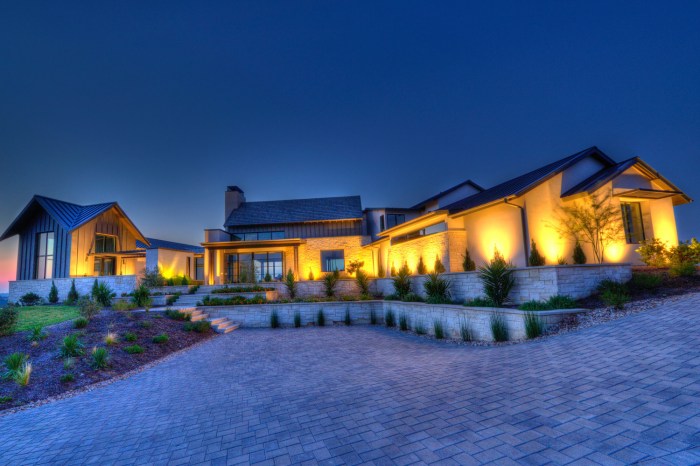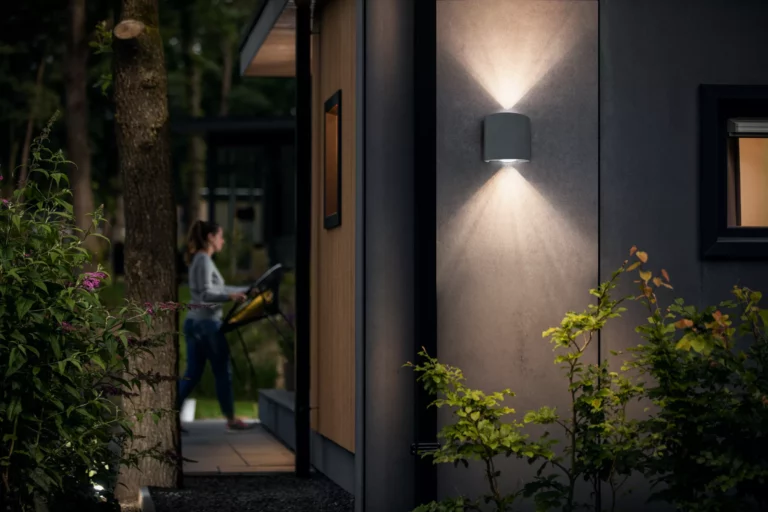Outdoor Lighting Electrician Near Me Expert Services
An outdoor lighting electrician near me is crucial for enhancing curb appeal, security, and functionality. This comprehensive guide explores the diverse landscape of outdoor lighting services, from initial consultation to final installation and maintenance. We’ll delve into various service areas, lighting types, customer needs, and the essential safety procedures involved.
We’ll analyze the diverse needs of homeowners, businesses, and property managers, considering factors like budget, style, and functionality. Understanding these requirements is key to delivering tailored outdoor lighting solutions. Furthermore, a detailed look at different lighting technologies, their respective costs, energy efficiency, and lifespans will help in making informed choices.
Defining the Service Area

Source: wpblandscape.com
A crucial aspect of establishing a successful outdoor lighting business is defining the geographic service area. This allows for effective resource allocation, targeted marketing, and ensures efficient service delivery. Precise boundaries enable accurate estimations of demand and potential customer base.
Potential Service Areas
This section, Artikels’s potential service areas for an outdoor lighting electrician, encompass various residential and commercial zones. Each area is defined by geographic boundaries, including specific cities, towns, and zip codes. The analysis considers factors such as population density, property values, and prevailing outdoor lighting needs.
- Area 1: Suburban Estates (e.g., City of Oakhaven, zip codes 90210-90215)
This area is characterized by high-value homes, often with large yards and intricate landscaping, demanding high-end outdoor lighting solutions. Customers in this area prioritize aesthetics and security, often seeking bespoke lighting designs. Property values in this area tend to be higher, correlating with a greater emphasis on sophisticated outdoor lighting installations. - Area 2: Family-Oriented Neighborhoods (e.g., Town of Maplewood, zip codes 11222-11225)
This service area encompasses residential neighborhoods with a mix of single-family homes and townhouses, primarily inhabited by families. Lighting needs tend to focus on safety and ambiance, often integrating security lights with decorative fixtures. The prevalence of children and outdoor activities influences the demand for functional and well-placed lighting. - Area 3: Commercial Corridor (e.g., Downtown City Center, zip codes 02101-02105)
This service area targets commercial properties, including restaurants, retail stores, and office buildings. Outdoor lighting is critical for visibility, security, and aesthetic appeal. The demand in this area centers around enhancing the commercial space’s curb appeal and ensuring pedestrian safety. There are more possibilities for integrating specialized lighting features into commercial outdoor spaces.
Demographic and Lighting Needs Comparison
The table below highlights a comparative analysis of the potential service areas based on demographics, housing types, and anticipated outdoor lighting needs.
| Service Area | Demographics | Housing Types | Outdoor Lighting Needs |
|---|---|---|---|
| Suburban Estates | High-income, often families with children, are affluent | Large single-family homes, custom estates | Aesthetically pleasing, sophisticated designs, security-focused, and often custom-built installations |
| Family-Oriented Neighborhoods | Mid-range income, families with children | Single-family homes, townhouses | Safety and ambiance, functional lighting, integrated security, and decorative fixtures |
| Commercial Corridor | Mix of demographics, businesses, professionals | Restaurants, retail stores, and office buildings | Visibility, security, commercial aesthetic, pedestrian safety, and large-scale lighting projects |
Types of Outdoor Lighting Services
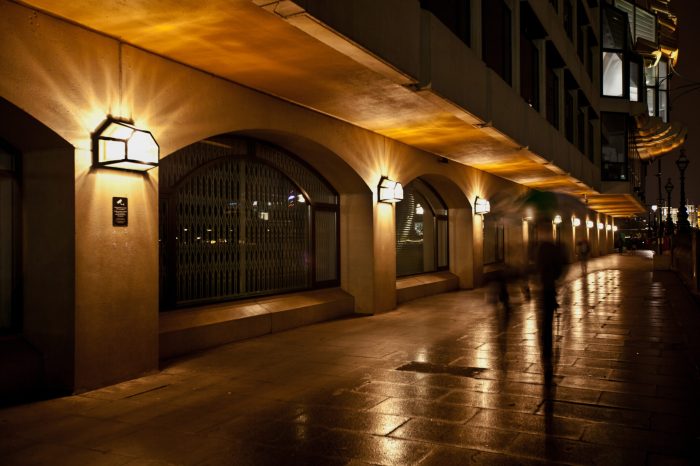
Source: terraelectric.net
Outdoor lighting plays a crucial role in enhancing the aesthetic appeal and safety of any property. A professional outdoor lighting electrician can transform your outdoor space with expertly designed and installed systems. From illuminating pathways to highlighting architectural features, outdoor lighting solutions can create a captivating ambiance.
Common Types of Outdoor Lighting Installations
Various types of outdoor lighting installations cater to different needs and preferences. These installations often combine multiple types of lighting to achieve the desired effect. A well-planned system can integrate landscape, security, pathway, and accent lighting for a harmonious design.
- Landscape Lighting: This type of lighting is designed to highlight the beauty of landscaping features, such as trees, shrubs, flowers, and water features. It can create a dramatic effect by subtly illuminating plants and creating visual interest.
- Security Lighting: Security lighting installations provide illumination to deter criminal activity and enhance safety. Strategically placed fixtures with motion sensors can effectively monitor properties and alert homeowners to potential threats.
- Pathway Lighting: Pathway lighting installations are essential for illuminating walkways, driveways, and other outdoor paths. This type of lighting enhances visibility and safety, preventing accidents and ensuring smooth navigation in the dark.
- Accent Lighting: Accent lighting focuses on specific architectural elements, such as columns, statues, or architectural details. It highlights these features, drawing attention to their unique design and craftsmanship.
Outdoor Lighting Technologies
Different technologies are used in outdoor lighting installations, each with its own set of advantages and disadvantages. LED technology has gained immense popularity due to its energy efficiency and long lifespan.
- LED (Light Emitting Diodes): LED lights are known for their energy efficiency, long lifespan, and versatility. They come in various colors and styles, allowing for customized lighting designs. Their reduced energy consumption translates to significant long-term cost savings.
- Halogen: Halogen lights provide a warm, incandescent glow, often used for accent lighting and security applications. They are generally less energy-efficient compared to LED technology and have a shorter lifespan.
- Low-Voltage Systems: Low-voltage systems use lower electrical currents, making them safer and easier to install. They are often used for landscape lighting due to their flexibility and ease of use.
Comparison of Lighting Technologies
The table below compares different lighting technologies based on cost, energy efficiency, and lifespan. Choosing the right technology depends on the specific needs and budget of the project.
| Technology | Cost | Energy Efficiency | Lifespan (approx.) |
|---|---|---|---|
| LED | Moderately High Initially, but Lower Long-Term | High | 50,000 – 100,000 hours |
| Halogen | Lower | Low | 2,000 – 4,000 hours |
| Low-Voltage | Moderate | Moderate | 10,000 – 20,000 hours |
Customer Needs and Expectations
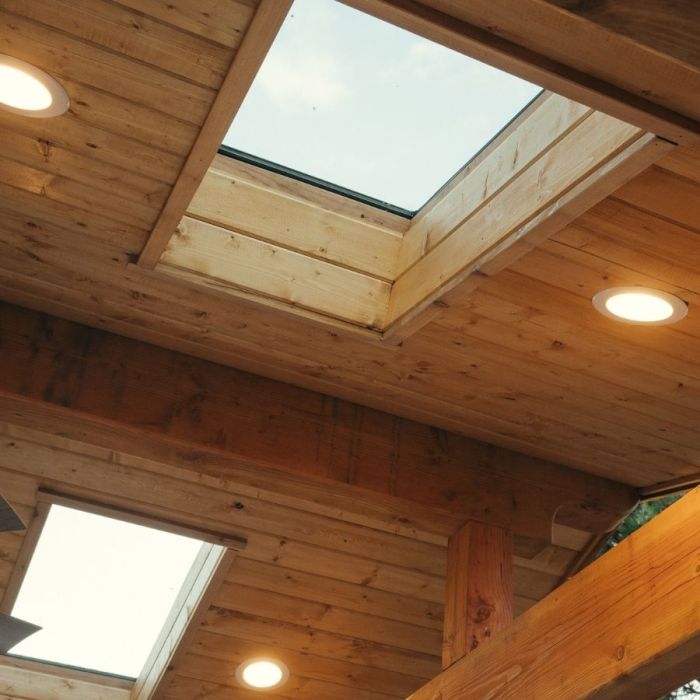
Source: sagelandscapes.com
Understanding customer needs and expectations is crucial for providing excellent outdoor lighting services. Meeting these needs directly impacts customer satisfaction and ultimately, the success of your business. This section delves into the common requirements of various customer segments, encompassing budget, desired style, functionality, and maintenance considerations.
Understanding the diverse expectations of homeowners, business owners, and property managers allows for tailoring services to specific needs. This targeted approach fosters trust and ensures client satisfaction.
Common Customer Needs
A key aspect of successful outdoor lighting design is understanding the common needs of your clientele. Customers prioritize different factors, and recognizing these nuances is essential for providing effective and tailored solutions. Budget constraints, aesthetic preferences, and desired functionality all play a significant role in shaping the customer experience. Properly addressing these factors leads to higher customer satisfaction and potentially increased repeat business.
- Budget: Financial constraints significantly influence the type and scope of outdoor lighting projects. Customers often have specific budget ranges, which dictate the available options in terms of fixtures, materials, and complexity of the installation. This is a primary consideration in initial consultations.
- Style: Aesthetic preferences are highly personal and greatly impact the final design. Customers may desire modern, traditional, contemporary, or a blend of styles. Understanding the client’s aesthetic preferences is vital for creating a cohesive and visually appealing lighting scheme.
- Functionality: The purpose of outdoor lighting varies greatly. Some customers may prioritize security lighting, others may focus on enhancing landscaping, and still others may want to create ambiance. Understanding the intended use of the lighting is critical to effectively address customer needs.
- Maintenance: Customers often consider the ongoing maintenance requirements associated with outdoor lighting. Factors like fixture durability, ease of cleaning, and potential for repairs impact their choices and expectations. Highlighting these factors in your consultation process is beneficial.
Customer Segmentation
Different customer segments have varying needs and expectations. Recognizing these differences allows for more effective service delivery.
- Homeowners: Homeowners often prioritize aesthetic appeal and functionality for their properties. They may want to enhance the beauty of their homes, improve security, or create a welcoming atmosphere. Budget considerations are frequently paramount, and homeowners often look for long-term value.
- Business Owners: Business owners may prioritize security, attracting customers, and enhancing the professional image of their establishments. They often seek solutions that improve safety and visibility for both employees and clients, potentially leading to increased business revenue. Their lighting choices may reflect a business’s image and aesthetic.
- Property Managers: Property managers frequently handle multiple properties and prioritize cost-effective solutions that maintain a consistent aesthetic and level of safety across their portfolios. They often require reliable lighting that’s easy to maintain and budget-friendly, considering the multiple properties they manage.
Budget and Lighting Style Correlation
The following table illustrates a potential correlation between budget and desired lighting styles for outdoor lighting projects. It’s important to note that these are general guidelines, and specific preferences may vary.
| Budget Range | Potential Lighting Styles |
|---|---|
| Low | Simple pathway lighting, basic security lights, and accent lighting with affordable fixtures. |
| Mid-Range | More complex designs using a mix of styles and materials, incorporating accent lighting and potentially landscape lighting features. Potential use of more durable and aesthetically pleasing fixtures. |
| High | Sophisticated, custom designs using high-quality materials and advanced lighting fixtures. This may include specialized lighting for architectural features and extensive landscape lighting systems. |
Service Process and Procedures
Our outdoor lighting service process is designed to be efficient, safe, and tailored to each client’s unique needs. We prioritize clear communication and meticulous execution from initial consultation to final installation and ongoing maintenance. This comprehensive approach ensures a positive experience and a beautifully illuminated outdoor space.
Our team adheres to stringent safety protocols throughout the entire service process, prioritizing the well-being of our personnel and the safety of your property. We understand the importance of electrical safety and maintain rigorous standards to prevent accidents.
Initial Consultation and Design
This stage involves a thorough discussion with the client to understand their requirements, preferences, and budget. We discuss desired aesthetics, functionality, and potential integration with existing systems. We take detailed measurements and assess site conditions to provide accurate recommendations and create a customized lighting plan. This includes identifying suitable locations for fixtures, considering light intensity and color temperature requirements, and factoring in any existing infrastructure.
Site Assessment and Planning
A comprehensive site assessment is conducted to evaluate the existing electrical infrastructure, ground conditions, and potential obstacles. This ensures that the chosen lighting design is practical and safe. We analyze factors such as access points, proximity to buildings, and the overall layout of the property. This information informs the design plan, ensuring a smooth installation process and long-term functionality.
Equipment and Tools
The specific tools and equipment required vary based on the type of project. Commonly used tools include voltage testers, insulated pliers, wire strippers, and various types of electrical connectors. Specialized equipment such as transformers, wiring harnesses, and mounting brackets may also be necessary depending on the complexity of the project. We maintain a well-stocked inventory of high-quality tools and equipment to ensure efficient and safe work.
Installation and Testing
The installation phase involves meticulous wiring, fixture placement, and connection to the power source. Each step is performed according to industry standards and local electrical codes. Testing procedures are integral to ensuring that all components function correctly and safely. Electrical continuity and proper grounding are meticulously checked to prevent electrical hazards.
Safety Procedures, Outdoor lighting, electrician near me
Strict safety procedures are implemented throughout the entire process. All personnel are trained in electrical safety protocols, including lockout/tagout procedures for working with energized electrical systems. Safety equipment, such as insulated gloves, safety glasses, and hard hats, is mandatory for all personnel. We prioritize the safety of our employees and the client’s property, following strict safety guidelines throughout the process.
Maintenance and Support
We provide comprehensive maintenance packages that include regular inspections and troubleshooting to ensure the longevity and functionality of the outdoor lighting system. This proactive approach helps prevent issues and prolongs the life of the fixtures. We offer responsive customer support for any concerns or maintenance needs that may arise after installation.
Typical Outdoor Lighting Installation Project
| Step | Description |
|---|---|
| 1 | Initial Consultation & Design |
| 2 | Site Assessment & Planning |
| 3 | Equipment Preparation & Safety Check |
| 4 | Wiring & Fixture Installation |
| 5 | Testing & Quality Assurance |
| 6 | Final Inspection & Client Review |
| 7 | Maintenance Plan Discussion |
Competitive Analysis: Outdoor Lighting Electrician Near Me
Understanding the competitive landscape is crucial for establishing a successful outdoor lighting business. Analyzing competitors’ services, pricing, and strengths/weaknesses allows for strategic positioning and effective marketing. This section provides a comparative analysis to inform business decisions and identify potential differentiation strategies.
Competitive Pricing Models

Pricing strategies vary significantly among outdoor lighting electricians. Some electricians employ a fixed rate per project, while others use an hourly rate or a combination of both. Fixed-rate models are often attractive to clients seeking clarity on total costs, whereas hourly rates may be more suitable for complex projects with varying labor demands. Understanding the prevalent pricing models in the area is essential for determining a competitive and profitable pricing strategy.
Competitive Service Offerings
Analyzing the services offered by competitors reveals the breadth of services available. Some companies specialize in specific lighting types, like landscape lighting, while others provide a broader range of services, including design consultations and maintenance contracts. The availability of additional services, such as design or maintenance packages, can significantly influence client choice. Evaluating the range of services offered by competitors is important for defining the niche or comprehensive service package.
Comparative Analysis Table
| Competitor | Pricing Model | Key Services Offered | Strengths | Weaknesses |
|---|---|---|---|---|
| Electrician A | Hourly rate with project estimates | Landscape lighting, security lighting, pathway lighting | Experienced team, high-quality installations | Potential for higher project costs, less transparent pricing |
| Electrician B | Fixed rate per project | Landscape lighting, architectural lighting, and electrical upgrades | Clear pricing, quicker project turnaround | May not offer comprehensive maintenance services |
| Electrician C | Combination of hourly and fixed rates | Residential and commercial outdoor lighting, energy-efficient solutions | Adaptable to diverse projects, with extensive experience | Potential for complexity in pricing, limited online presence |
Note: This table represents a hypothetical example. Actual competitor information should be researched and updated for accuracy.
Differentiation Strategies
Differentiating the service offering is vital for gaining a competitive edge. Focusing on a niche market, such as eco-friendly lighting solutions, or offering specialized services, such as design consultations, can set a business apart. Developing a unique selling proposition, perhaps highlighting exceptional customer service or rapid response times, is also important. Strong customer testimonials and positive online reviews can further enhance the brand image and reputation.
Competitive Strengths and Weaknesses
Identifying competitor strengths and weaknesses is essential for developing strategic advantages. A competitor’s strong reputation for quality workmanship may be offset by less-than-stellar customer service. Conversely, a competitor’s limited service range might be compensated by their aggressive marketing and online presence. Analyzing the competition through this lens enables the development of a service offering that capitalizes on opportunities and mitigates vulnerabilities.
Marketing and Sales Strategies
Attracting customers for outdoor lighting services requires a multifaceted approach. Effective marketing strategies will build brand awareness, highlight expertise, and ultimately drive qualified leads. A comprehensive plan should include targeted online efforts, testimonials, and a strong local presence.
Online Marketing Techniques
A robust online presence is crucial for reaching potential customers. This involves employing various digital strategies to enhance visibility and engagement. Optimizing online visibility through targeted, local, and social media campaigns can significantly boost lead generation. Utilizing social media platforms to showcase projects, engage with potential clients, and build a community around the brand will enhance brand awareness and establish a professional image.
- Social Media Marketing: Platforms like Facebook, Instagram, and even TikTok can be used to share stunning visuals of outdoor lighting projects. These platforms can be employed to interact with potential customers, answer questions, and showcase the company’s work. Engaging content, including before-and-after photos, client testimonials, and behind-the-scenes glimpses of installations, can foster a strong online community.
- Local Optimizing the website and online profiles for local searches is vital. This includes incorporating relevant terms, such as “outdoor lighting electrician near me,” into website content and local business listings. Encouraging online reviews on platforms like Google My Business will improve local search rankings and build trust among potential customers.
- Pay-Per-Click (PPC) Advertising: Targeted advertising campaigns on platforms like Google Ads can drive highly qualified traffic to the website. By strategically utilizing SEO and bidding strategies, these campaigns can be effective in reaching potential customers actively searching for outdoor lighting services.
Customer Testimonials and Case Studies
Positive customer feedback is a powerful marketing tool. Well-crafted testimonials and case studies showcase the company’s expertise and the positive outcomes for clients. Collecting and presenting testimonials engagingly can significantly enhance credibility. Case studies, in-depth descriptions of successful projects, can demonstrate the company’s problem-solving capabilities and expertise in outdoor lighting design.
- Collecting Testimonials: Requesting feedback from satisfied clients through follow-up calls, emails, or online forms can provide authentic testimonials. These testimonials should highlight the value proposition of the company, such as timely service, professional expertise, and exceptional results.
- Creating Case Studies: Developing detailed case studies for each project can provide valuable insights into the company’s approach. These case studies should emphasize the specific challenges faced, the solutions provided, and the positive outcomes achieved for the client.
- Sharing Testimonials and Case Studies: Showcase testimonials and case studies prominently on the website, in marketing materials, and on social media. Visual presentations with compelling narratives will make them more engaging and memorable.
Comprehensive Marketing Strategy
A well-structured marketing strategy is crucial for driving consistent business growth. The table below presents a comprehensive approach.
| Marketing Activity | Description | Frequency | Budget Allocation |
|---|---|---|---|
| Social Media Management | Regular posting, engagement, and community building | Daily/Weekly | Variable, depending on ad spend |
| Local Optimization | Website optimization, directory listings, and online review management | Ongoing | Variable, depending on the tools |
| Paid Advertising Campaigns | PPC campaigns on Google Ads and other platforms | Monthly/Quarterly | Variable, depending on campaign goals |
| Customer Testimonial Collection | Regularly requesting and compiling testimonials | Monthly | Low |
| Case Study Development | Creating detailed case studies of successful projects | Quarterly | Variable, depending on project count |
Pricing and Billing Models

Source: thumbtack.com
Setting clear and transparent pricing is crucial for building trust with clients and ensuring profitability. A well-defined pricing structure helps manage expectations, allows for accurate project estimations, and streamlines the billing process. This section presents Artikels’ various pricing models for outdoor lighting services, along with factors affecting pricing and presentation strategies.
Pricing Models for Outdoor Lighting Services
Different pricing models cater to various project types and client needs. Choosing the right model ensures a fair and mutually beneficial arrangement.
- Hourly Rates: This model is suitable for smaller, time-sensitive projects or tasks. It provides a straightforward way to calculate costs based on the time spent on the job. Hourly rates often include the electrician’s time, travel expenses, and basic equipment costs. For instance, an electrician might charge $75 per hour, encompassing their labor, tools, and the associated overhead.
- Project-Based Pricing: This method is generally favored for larger, complex projects. It offers a fixed price for the entire project, encompassing all labor, materials, and associated expenses. This provides clarity for the customer, as the overall cost is known upfront. For example, a landscape lighting project might be quoted at $5,000, covering all necessary installations.
- Package Deals: Bundling services can create attractive value propositions for clients. Package deals offer discounted rates for multiple services or for combining services with other needs, such as electrical upgrades. This might involve discounts for a comprehensive lighting package, including design consultation, installation, and maintenance contracts.
Factors Influencing Pricing Decisions
Several factors influence the final price of an outdoor lighting project. Understanding these factors ensures accurate cost estimations and transparent communication.
- Labor Costs: Electrician wages, benefits, and overhead expenses significantly impact the hourly rate or project cost. Fluctuations in the labor market or local wage standards can influence pricing decisions. For instance, an electrician’s hourly rate may increase if local labor costs rise.
- Material Costs: The cost of materials, such as fixtures, wiring, and transformers, directly impacts project pricing. Variations in material costs due to market fluctuations, supply chain issues, or material quality need to be considered.
- Project Complexity: The scope of work, including the number of fixtures, the type of wiring, and the complexity of installation, significantly impacts the total project cost. A more extensive project requiring specialized techniques or custom designs will typically have a higher price than a straightforward installation.
Presenting Pricing to Customers
Clear and concise communication is vital for effectively presenting pricing to customers. This involves providing detailed estimates and clear explanations of costs.
- Detailed Estimates: Estimates should include all expenses, including labor, materials, permits (if applicable), and any additional fees. A detailed breakdown of costs helps customers understand the value proposition and makes the pricing transparent.
- Transparent Communication: Explain the reasoning behind the pricing, highlighting the value customers receive. For instance, emphasizing the longevity of the materials or the expertise of the electrician can justify higher costs.
- Payment Options: Offering flexible payment options can make services more accessible. Options like financing or payment plans can help customers manage project costs.
Pricing Model Comparison
This table provides a comparative overview of various pricing models and their associated cost structures.
| Pricing Model | Cost Structure | Suitable for |
|---|---|---|
| Hourly Rate | Labor cost per hour + material cost + travel expenses | Smaller projects, time-sensitive tasks |
| Project-Based Pricing | Fixed price for the entire project, including labor, materials, and permits | Larger, complex projects |
| Package Deals | Discounted rates for multiple services or bundled packages | Multiple services, value-driven projects |
Safety and Compliance
Ensuring the safety of both clients and personnel is paramount in outdoor lighting installations. Proper safety procedures and adherence to local regulations and electrical codes are critical to minimizing risks and maintaining a professional reputation. This section articulates the importance of safety protocols and compliance measures.
Adherence to safety procedures and regulations is essential for preventing accidents, injuries, and property damage during outdoor lighting installations. It also demonstrates a commitment to professionalism and client satisfaction. This commitment protects the company from potential legal liabilities and builds a positive reputation within the community.
Importance of Safety Procedures
Safety procedures are crucial for mitigating risks associated with electrical work, especially in outdoor environments. These procedures include proper use of personal protective equipment (PPE), such as safety glasses, gloves, and insulated tools. They also encompass establishing clear communication channels and procedures for handling emergencies. A thorough understanding and consistent application of these procedures prevent accidents and protect personnel.
Local Regulations and Licensing Requirements
Local jurisdictions have specific regulations for electrical work, including outdoor lighting installations. These regulations often Artikel licensing requirements for electricians and contractors. These regulations ensure that licensed and qualified professionals perform installations, promoting public safety and adherence to established standards. Adhering to these requirements is essential for avoiding penalties and maintaining a compliant business operation.
Ensuring Compliance with Electrical Codes and Safety Standards
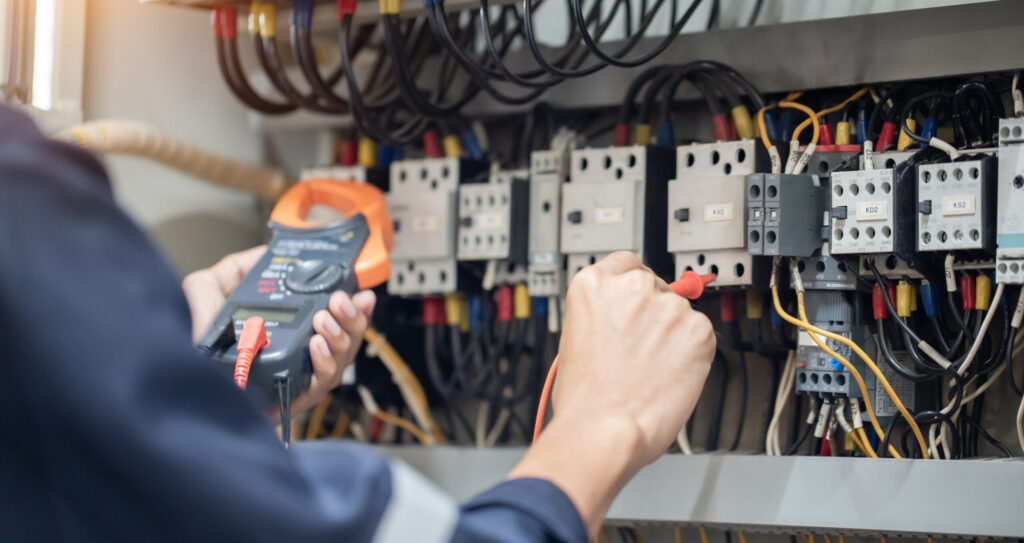
Compliance with relevant electrical codes and safety standards is mandatory for outdoor lighting installations. These standards dictate proper wire sizing, grounding procedures, and the use of appropriate materials to ensure electrical safety and minimize the risk of fire or electrocution. Adherence to these standards is critical for preventing incidents and ensuring the safety of clients and the community.
Safety Checklists and Compliance Documents
Maintaining a comprehensive set of safety checklists and compliance documents is vital for tracking and verifying adherence to regulations. These documents provide a record of safety procedures followed and can be critical in the event of an incident or audit.
- Pre-Installation Safety Checklist: This checklist should cover equipment inspection, site assessment, potential hazards, and personnel training.
- Work Permit and Authorization Documentation: Verification of permits, approvals, and necessary authorizations from the relevant authorities is critical.
- Incident Reporting Procedures: Implementing clear procedures for reporting any incidents, accidents, or near misses ensures timely investigation and corrective actions.
- Emergency Contact List: Maintaining a readily accessible emergency contact list for immediate response to accidents or emergencies.
- Electrical Codes and Standards Documentation: This includes local electrical codes, national electrical codes, and other relevant safety standards.
Summary
In conclusion, finding the right outdoor lighting electrician near you is a significant investment. This guide has provided a thorough overview of the service process, from defining service areas to understanding customer needs and competitive analysis. Choosing an electrician who understands your specific requirements and prioritizes safety and compliance is essential for a successful and satisfying outcome. By understanding the various factors involved, you can confidently navigate the process and illuminate your outdoor spaces with the perfect lighting solutions.
